Moto G review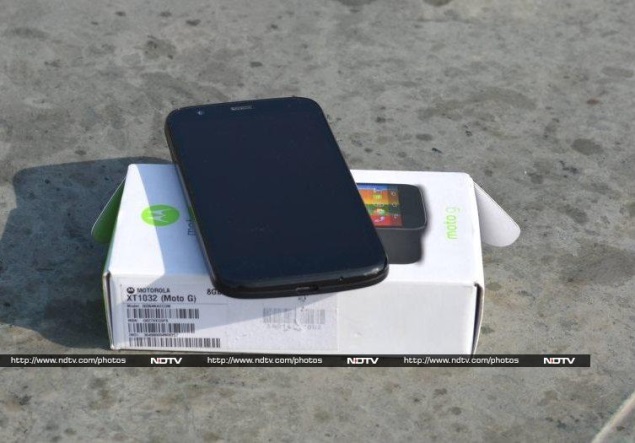

Budget smartphones might not attract as much attention as their high-end counterparts, but there is no denying that these devices are in massive demand, especially in markets like India. Motorola's Moto G is an attempt to grab buyers' attention by offering a number of features at an extremely reasonable price.
After a brief sabbatical, Motorola has returned to the Indian market with its Moto G smartphone, which is an affordable device for cost-conscious consumers worldwide. This phone was designed as part of Google's plan to focus on creating a distinctive lineup of devices for different markets. Now, withLenovo recently acquiring Google's stake in Motorola Mobility, we don't know whether or not the company will stick with the same strategy.
Motorola underscored its plan to focus on emerging markets by unveiling the Moto G at a huge event in Sao Paulo, Brazil in November last year. The budget-friendly smartphone was supposed to have reached Indian shores by January 2014, and it's here after only a short delay. As promised, it comes at a decent price.
We got our hands on the black version of the Moto G (single-SIM). Does this low price come at the cost of performance?
Look and feelThe first thing that struck us about the Motorola Moto G was its novel packaging. When it came to our doorstep, we didn't realise that the sleek box hid a mobile phone inside. Amazingly everything from the device to the charger fits within this slim box.
The Moto G is a candybar phone. It doesn't have any contours - the design is very basic yet modern. When we first looked at the Moto G, we mistook it for the company's flagship Moto X.
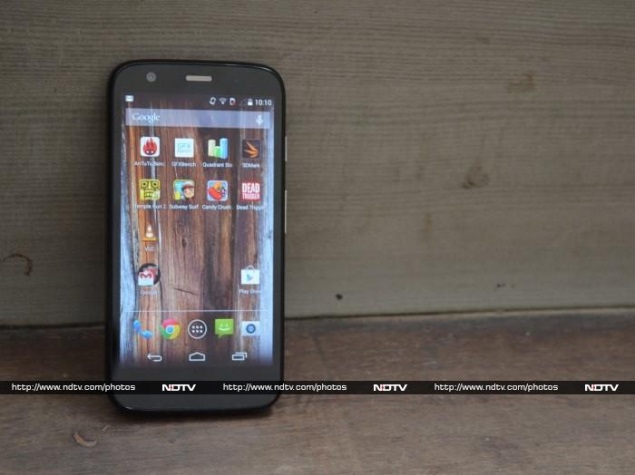
The G looks like a replica of the Moto X (except for its size), which is not really a bad thing considering the premium look of its elder sibling. However, the Moto G is different in a few ways. It's definitely thicker, measuring 129.9x65.9x11.6mm compared to 129.3x65.3x10.4mm for the X. At 143 grams, the Moto G is also heavier than the Moto X (130 grams). However, we assume that for an average buyer in this price segment, thickness and weight of a smartphone are not the biggest concerns. The Moto G features curved edges that offer a good grip.
The Moto G's front panel is dominated by a 4.5-inch screen, which is only marginally smaller than 4.7-inch display found on the Moto X. The front panel features a black strip of glass around the screen that visually differentiates the plastic front and rear panels. Notably, the Moto G does not have any logo or branding on the front.
There's a 1.3-megapixel front-facing camera which to the left of the chrome earpiece. There are no soft-touch capacitive buttons on the front panel, a design touch that is commonly seen on the Nexus range of devices. It's worth pointing out that Google's Nexus 7 (2013) tablet's front panel also bears a lot of similarities to the Moto G. The new Nexus 7 features a glass strip around the screen, identical to the Moto G.
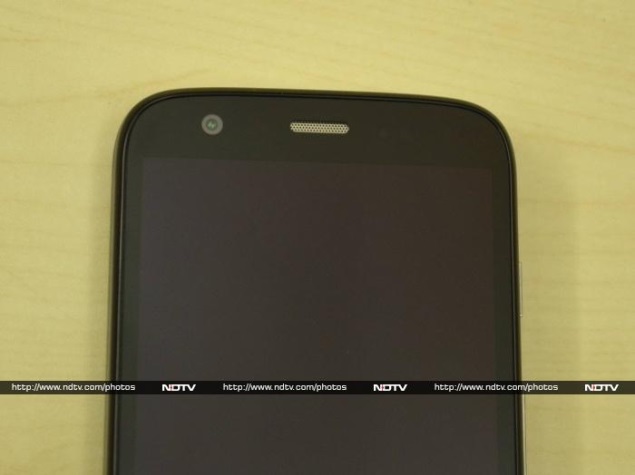
It seems Google wanted to align the industrial design of its hardware products. The Nexus line and Motorola's two recent phones do have a family resemblance that sets them apart from Samsung's and HTC's phones.
Motorola has also used a nano-coating on the Moto G that acts as light water repellent. This does not make the Moto water resistant, but it can protect the smartphone from light splashes of water, which is still an interesting touch for a smartphone at this price point.

The curved rear panel is made of a soft-touch polycarbonate, and is comfortable to hold. Yes, it sometimes gets badly smudged by fingerprints, but this is nothing that cannot be cleaned. The panel is removable even though the battery isn't. Motorola has announced that there will be accessories including rear shells and flip covers (both in seven colour options) and Grip Shells (in five colour options). This means that customers will have a choice of colours, something we generally see on Nokia's Lumia range.
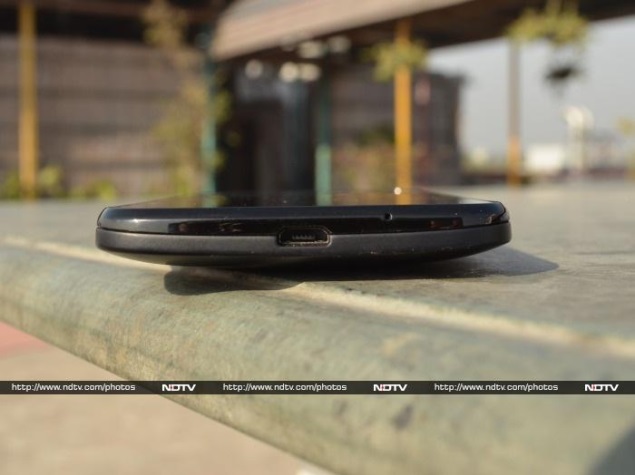
The power and volume rocker buttons are placed on the right side of the Moto G, while the 3.5mm audio jack is on the top and the Micro-USB port is on the bottom panel. The placement of the physical buttons is fine and we had no problem reaching them even when we were not looking at the device. The Moto G's back houses a 5-megapixel camera with an LED flash with a speaker grille to its left. The Motorola logo is embossed just below the LED flash and is identical to the one found on the Moto X. Peel off the back panel and you can get to the SIM slot, which accepts a Micro-SIM. The unit we received was a single-SIM device, though Motorola has introduced a dual-SIM Moto G variant in India.
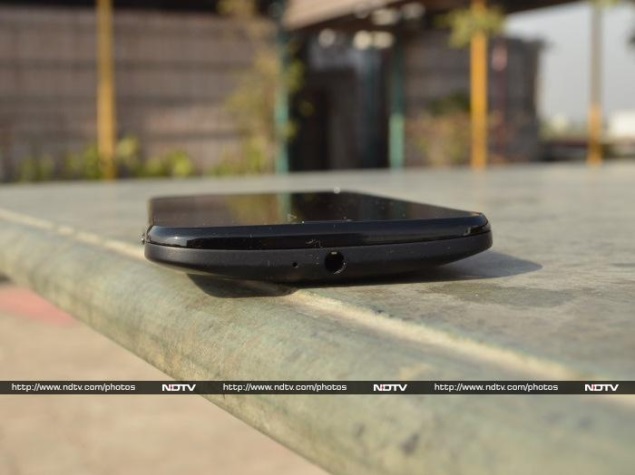
The Motorola Moto G has an overall solid build, though it does feel bit plasticky. Yes, it follows a tried and tested design rather than a radically new one, but it certainly has its own identity and there's no mistaking it for any other phone from any other company.
ScreenOne of the biggest highlights of the Moto G is its 4.5-inch 720x1280-pixel IPS LCD, which works out to a density of 329 pixels per inch. Notably, the Moto G's screen is a bit sharper than Apple's iPhone 5s, which offers 326ppi.
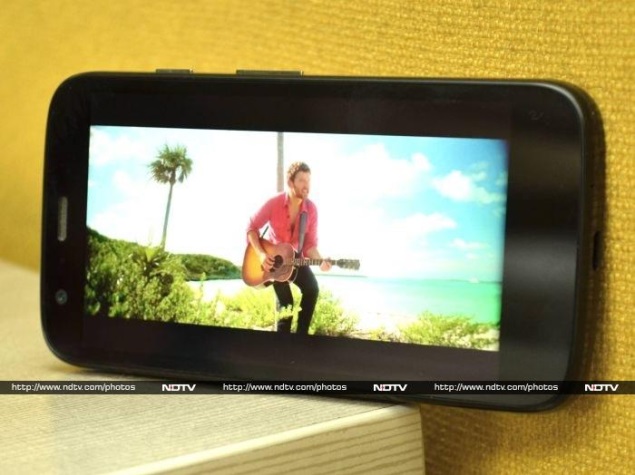
Motorola has also used Corning Gorilla Glass 3 on the Moto G to protect it from scratches. It's worth pointing out that Gorilla Glass is usually found on premium devices priced at Rs. 30,000 and above.
The IPS LCD screen doesn't have the fullest colour reproduction like the HTC One and LG G2 or the deepest blacks like Samsung's high-end Galaxy smartphones (Galaxy S4 or Galaxy Note 3) with AMOLED screens do, but it is bright and colours are consistently vibrant. Thankfully the viewing angles are never a problem. The screen is not very reflective and visibility in bright sunlight was also acceptable. Further, the Moto G's 4.5-inch screen is fine for video playback and gaming.

Text on the Moto G is always crisp and clear.
There is no denying that many brands have launched smartphones with full-HD screens of late, but after using the Moto G for some time we felt that 329ppi is more than enough for a screen of this size. Motola has definitely upped the ante for phones in this price bracket.
Camera
The Moto G sports a 5-megapixel rear camera accompanied by an LED flash, and also has a 1.3-megapixel front-facing camera. At this price point, we didn't expect a higher megapixel count. The camera delivers decent but uninspiring shots in good lighting conditions.
The Moto G sports a 5-megapixel rear camera accompanied by an LED flash, and also has a 1.3-megapixel front-facing camera. At this price point, we didn't expect a higher megapixel count. The camera delivers decent but uninspiring shots in good lighting conditions.
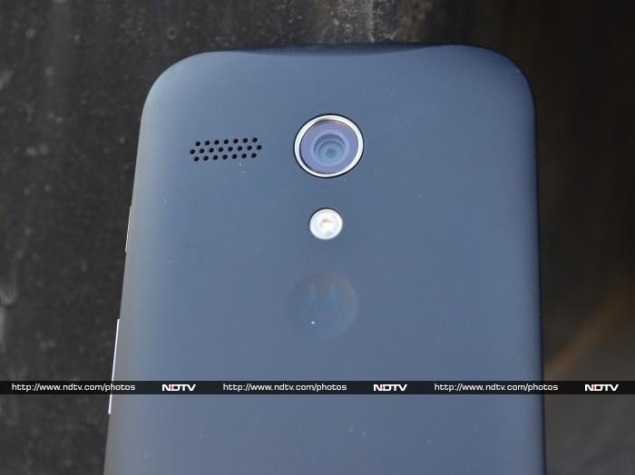
We tested the Moto G's rear camera both outdoors and indoors in a variety of lighting conditions and found that images taken outdoors during daylight came out well, though they were a little over-saturated and we could detect a little bit of noise at the edges. You can notice that detail is lacking if you zoom in to a photo taken with a Moto G. Other than that, we found the quality of images taken in sufficient light to be satisfactory. However, the same could not be said for indoor and low-light shots. Photos taken in artificial light (without using the LED flash) are not very impressive, as background noise does tend to creep in.
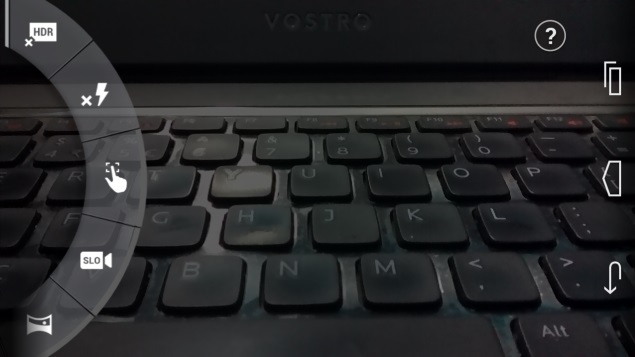
The Moto G's rear camera can be set to take 5-megapixel shots in the 4:3 aspect ratio, while 16:9 shots will come out at 3.8 megapixels.
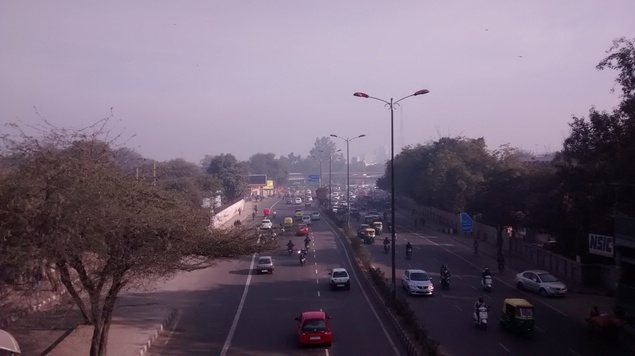
The Moto G's camera app is not stock and adds a bit of flavour the otherwise vanilla OS. Motorola's camera app has a circular control bar that pops out from the left of the screen when tapped. Additional features include 4X digital zoom, slow motion video, burst mode, auto HDR mode, Panorama and tap to focus. The Moto G's burst mode allows users to take up to 99 shots at once; users just need to long-press the camera soft key on the screen to start shooting. Notably, there are no ISO and exposure control settings on the Moto G.
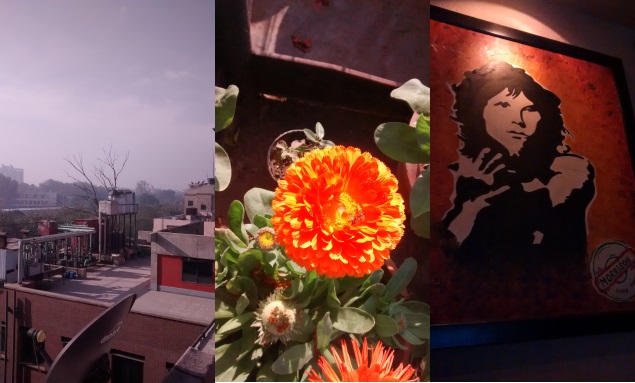
The 1.3-megapixel front facing camera can be used for selfies and video chats. We found that videos and images captured indoors or even outdoors with this camera were a bit grainy.
We would have liked a physical button for the camera as one has to rely on the soft key on the screen to click images.
Software/ Interface
When the Moto G reached our office, the device was running Android 4.3 out of the box. However, we soon encountered an alert that said "Please update your Moto G to Android's latest version (4.4.2)."Motorola had rolled out the Android 4.4.2 KitKat update for the Moto G ahead of schedule in December last year.
When the Moto G reached our office, the device was running Android 4.3 out of the box. However, we soon encountered an alert that said "Please update your Moto G to Android's latest version (4.4.2)."Motorola had rolled out the Android 4.4.2 KitKat update for the Moto G ahead of schedule in December last year.

The Moto G with Android 4.4.2 KitKat is most updated smartphone in its price segment and offers a stock Android experience.
The Nexus 5 was the platform lead for Android 4.4 (KitKat) and the Moto G bears a lot of similarities to it in terms of software. Android 4.4 has a number of visual changes compared to Android 4.3 (Jelly Bean), including a new launcher that makes the interface even more minimalistic. The Moto G also has flatter design elements, more muted colours in the status icons, more transparency, and smoother transition animations.

We noticed a smooth flyaway animation on the Moto G, similar to the one seen on the Nexus 5, while moving between the app launcher and homescreen. The Moto G's app launcher features app icons and widgets; now due to the icons being larger, you'll see a grid of 4x5 instead of a 5x5.
The Moto G offers five customizable homescreens, and lots of widgets and apps classified into preloaded and downloadable categories. Notably, you cannot go beyond five homescreens, unlike with the Nexus 5.
Shortcuts for the dialler, Chrome browser, main menu, Messages and camera app remain visible when you swipe between homescreens. Notifications in the tray can be expanded with a two-finger pull gesture, and there are buttons for clearing all notifications and showing the quick settings shortcuts. These include toggles for Brightness, Settings, Wi-Fi, Network, Battery, Airplane Mode, Bluetooth, and Location settings. Unlike the Nexus 5, the Moto G does not have a quick Alarm clock shortcut.
Long-pressing on the Moto G's homescreen brings up options to change the wallpaper. A choice of still, live and custom wallpapers are now available under a single menu.
Another feature that gives the Moto G a clear advantage in the affordable smartphone segment is the voice guided search feature. This was also first seen on the Nexus 5. A user can initiate a voice search on the Moto G when it's unlocked by simply saying, 'OK Google.' However, it is only available when the language is set to US English.
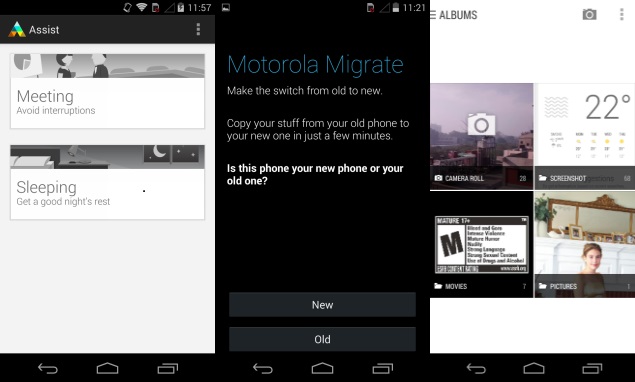
The Moto G also includes a revamped Phone app that now automatically prioritises contacts based on who you talk to most often. The app includes a search bar, space for the most frequently called contacts and favourites, and shortcuts to the contact list, dialling pad, call history and settings.
The Moto G also features a new Photos app that allows viewing and editing of locally stored and Google+ images. The new Photos app features deeper integration with Google+ and can be used to tag photos.
The Email app on the Moto G has also been revamped, and it now displays pictures of contacts for emails. Navigation has been made identical to the Gmail app and you can swipe messages to delete them.
The Moto G also includes Google Drive, Keep, Play Games, Play Movies, Play Movies, Play Books, Play Newsstand and Quickoffice for creating and editing documents, spreadsheets and presentations. You can print documents through the Google Cloud Print plugin, or apps made by printer manufacturers.
Motorola preloads two other major apps on the Moto G. Motorola Migrate can help move the contents of an old Android phone to your new Moto G. Motorola Assist allows users to silence the device while you're sleeping or driving. We tried it out, and noted that the app automatically sent a text message to callers in the time we told it we were busy.
Performance/ Battery LifeThe Moto G is powered by 1.2GHz quad-core Qualcomm Snapdragon 400 processor with Adreno 305 graphics and 1GB of RAM onboard. The Moto G comes in two storage capacities: 8GB and 16GB, and does not support expandable storage. We received an 8GB unit, of which only 5.5GB was user-accessible.

Even though the Moto G falls in the budget smartphone segment, the limited storage on the device is definitely a limiting factor. Google is offering 50GB of free Google Drive storage for two years for every Moto G buyer, which is additional to the standard 15GB available to every Google account user. However, cloud storage is no substitute for physical storage, especially since budget users won't have very expensive data plans.
The Moto G definitely ups the ante in terms of innards. Brands such as Micromax and Xolo, which have come to dominate the sub-Rs. 15,000 segment, usually use MediaTek chipsets.
The overall experience of navigating through the Moto G's interface was extremely impressive, thanks to all the power under its hood, and the fact that the UI is devoid of unnecessary bells and whistles such as transition effects. We did not experience any lag at all while launching apps, playing light games, scrolling through web pages and switching between apps on the Moto G.
With its quad-core processor running under the hood, the Moto G manages to chug along just fine. We multi-tasked all day, which included chatting via WhatsApp and Hangouts, browsing the Web and playing games like Temple Run 2 and Plants vs. Zombies 2 without any trouble. In day to day activities the Moto G worked smoothly and we were never left wanting for more power - that is until we tried a few heavy games like Shadow Gun and Dead Trigger.
The clarity of the Moto G's loudspeaker is good, but isn't too loud and breaks at its highest volume. Motorola does not supply any headphones in the Moto G box, which is a surprising omission.
The Moto G's 4.5-inch IPS LCD HD screen is good for movies and videos. We were impressed with the colour reproduction and viewing angles on the Moto G.
Call quality on the Moto G was impressive and the device was able to latch on to cellular networks even in weak signal areas, which came in handy at times. Our tests were performed on a single-SIM model, although Motorola will be selling the dual-SIM version here.
The Moto G scored well in our benchmark tests. We recorded a score of 11,874 in AnTuTu, which was right behind the Nexus 4 and Samsung Galaxy S III. Quadrant gave us a score of 8,569 which is ahead of HTC's flagship smartphone from two years ago, the One X. On the graphics front, the Moto G remarkably reached 11 frames per second in the GFXbench test, and 5629 in the 3DMark Ice Storm Extreme run-through.
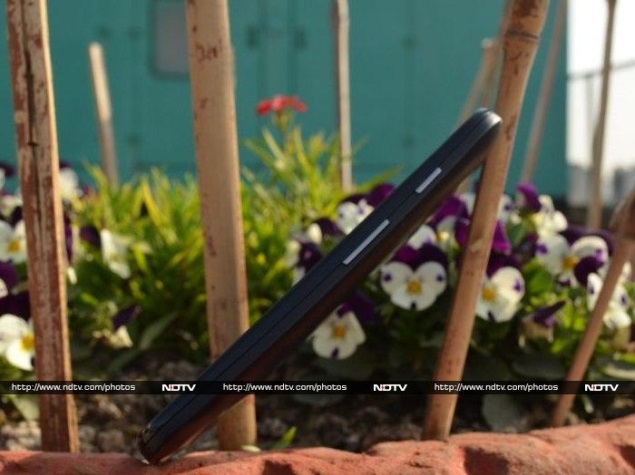
The Moto G packs a 2070mAh battery which is non-removable and can deliver a mixed usage time of up to 24 hours, according to Motorola. We were able to get about a day (22 hours) of normal usage on the Moto G, which consisted of Web browsing and watching videos on YouTube, a few calls lasting for about an hour, with Wi-Fi switched on, the display set to auto brightness, and the usual notifications for the messages, emails, Facebook, Hike and WhatsApp enabled.
With heavy usage, which included calls lasting for about two hours, 3G turned on all the time, casual photography and watching a movie for around two hours, an hour of casual gaming (Temple Run 2 and Dead Trigger), and notifications enabled, the device lasted for about 12-13 hours, which was not bad.
In our video loop rundown test, the Moto G was able to able to deliver 8 hours and 30 minutes of battery life.
Verdict
What makes the Moto G special is the fact that it is one of a very small number of devices running the latest version of Android, and one of the only ones priced this low to be doing so.
What makes the Moto G special is the fact that it is one of a very small number of devices running the latest version of Android, and one of the only ones priced this low to be doing so.
The Moto G scores heavily in terms of style and substance, and our only major quibbles are the non-expandable storage and below-par camera performance. The 4.5-inch HD screen is wide, and yet the phone is small enough to hold in one hand and type easily with a thumb. Most of all, praise be, the Moto G is also extremely affordable.
This phone is definitely aimed at price-conscious Indian smartphone buyers, and its array of colourful back shells will attract the style-conscious as well. Yes, it isn't perfect, but it isn't meant to compete against the likes of the Samsung Galaxy S4, HTC One or LG G2. At its price, we're willing to overlook its faults.
The Moto G is available in two variants: 8GB for Rs. 12,499 and 16GB for Rs. 13,999. At this price point, no other phones offer an experience that is as good, so in that sense the Moto G is a game changer. If you have your eyes set on the Moto G, we recommend you spend the extra bucks and get the 16GB version, given the limited user accessible storage available in the 8GB version. Our only other complaint with the Moto G is the average camera, but the only phone that offers a better camera in the same price bracket is the Nokia Lumia 720, so the newest Motorola smartphone is a winner overall.
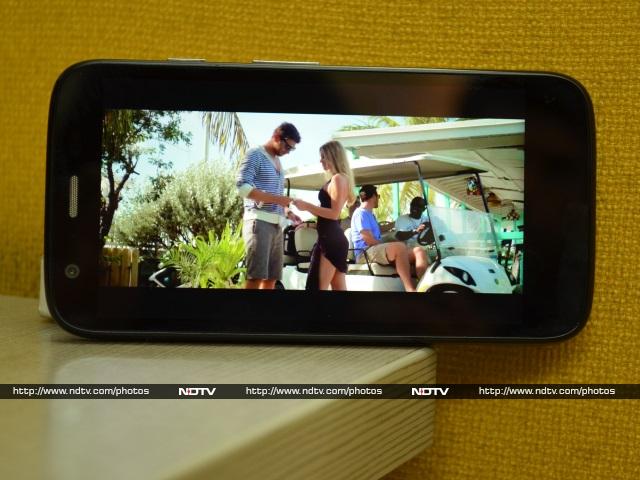
Moto G in pictures








 .
.
0 comments:
Post a Comment